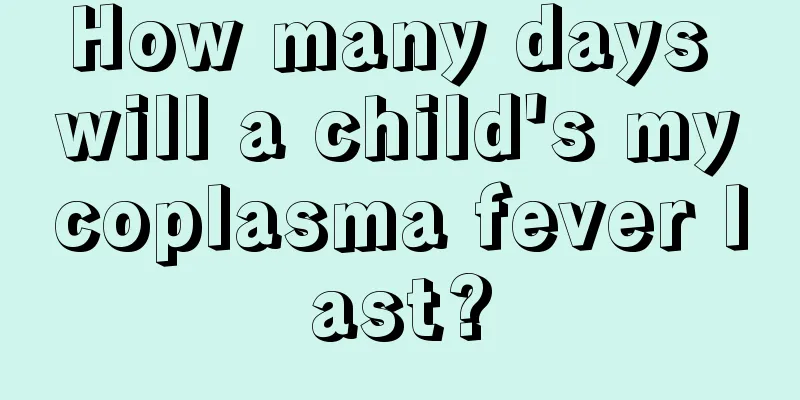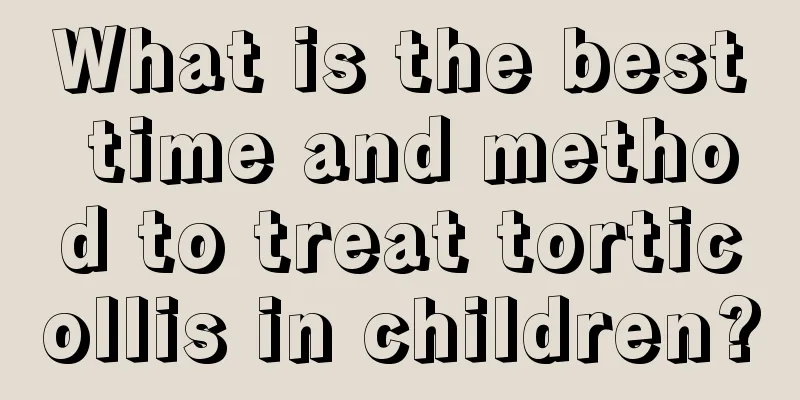How many days will a child's mycoplasma fever last?

|
It is said that mycoplasma is the simplest prokaryotic cell and the smallest organism, but it is extremely harmful. Because many children have weak immunity, they are easily attacked by the virus and become ill. Clinically, children will have fever symptoms after being infected with chlamydia, which need to be relieved in time. So how should this symptom be treated and how many days will it take to get better? Mycoplasma infection in children is a tiny microorganism that is smaller than bacteria but larger than viruses. It is the smallest prokaryotic organism that can live independently, but it also has some characteristics of bacteria. There is a type of Mycoplasma pneumoniae that is a common pathogen that causes pneumonia in children. The "SARS" caused by the newly emerged SARS virus in 2003 was actually "stole" the name "atypical pneumonia" because the cause of the disease was unknown at the beginning. True atypical pneumonia is the old name for mycoplasma pneumonia, which accounts for 15% to 20% of pediatric pneumonia. disease The incubation period of Mycoplasma pneumoniae infection in children is relatively long, and most of the symptoms are pharyngitis, rhinitis, tracheitis and bronchiolitis, with obvious fatigue and loss of appetite. The cough is dry at the beginning and then turns into a stubborn and severe cough without sputum or accompanied by a small amount of sticky sputum, especially at night. Infants and young children show wheezing and difficulty breathing. In severe cases, mycoplasma pneumonia may occur. Children who develop mycoplasma pneumonia account for 3% to 10% of all those infected with Mycoplasma pneumonia. Mycoplasma pneumoniae infection may also cause lesions in organs other than the respiratory tract, such as myocarditis, hepatitis, arthritis, nephritis, meningitis, hemolytic anemia, thrombocytopenic purpura, etc. Mycoplasma pneumoniae can also cause lesions in other systems and organs, such as measles-like rash, myalgia, migratory joint pain, liver function damage, hemolytic anemia, meningoencephalitis, myocarditis, pericarditis, nephritis, etc. Chinese and Western medicine treatment Correct selection of antibiotics is the key to the success of treating mycoplasma pneumonia. Because mycoplasma hides inside cells, and the concentrations of penicillins and cephalosporins in cells are very low, and these two antibiotics kill bacteria by destroying the cell walls of bacteria, but mycoplasma does not have cell walls, the above two antibiotics are "powerless". Clinical applications have confirmed that erythromycin has a very high concentration in cells and can kill mycoplasmas, but erythromycin has significant side effects and has been replaced in recent years by azithromycin, which has a longer duration of action, only needs to be taken once a day, and has relatively fewer side effects. Generally, the medication needs to be taken for 2 to 3 weeks, otherwise it is easy to relapse. Family prevention Children with Mycoplasma pneumonia should be treated early. During the illness, parents should let their children rest more and keep the air in the bedroom fresh. For children with Mycoplasma pneumonia, the best room temperature is 18℃~20℃ and the humidity is maintained at about 60% to prevent respiratory secretions from drying out and becoming difficult to cough out. You should also pay attention to your child's diet and nutrition, encourage your child to drink plenty of water, prepare some nutritious and easy-to-digest food for your child, and feed him or her small meals frequently. Because Mycoplasma pneumonia is contagious and prone to relapse, treatment must be thorough and isolation is required during the illness. The prevention of Mycoplasma pneumoniae infection mainly relies on strengthening physical fitness. Take your children to participate in more outdoor activities and physical exercises, especially strengthen breathing exercises to improve respiratory function. Teach your children to cover their mouths with a handkerchief or paper when they cough to prevent spitting and to prevent germs from contaminating the air and infecting others. Children who are susceptible to respiratory infections should pay attention to climate changes when going out in cold seasons or when the climate changes suddenly, and add clothes in time to prevent catching a cold. |
<<: How to cure dysentery in children the fastest
>>: What to do if a child has acute appendicitis
Recommend
What to do if children have Eustachian tube inflammation
Every year, many children suffer from hearing los...
What causes upper respiratory tract infection in children?
When sending children to kindergarten or elementa...
The dangers of precocious puberty in children
Every child should have a happy and joyful childh...
Why do babies sweat so much?
As China's policy of encouraging childbirth c...
Can a newborn baby be rocked?
When a newborn is crying, parents like to hold th...
One and a half year old baby with allergic rhinitis
Children who often scratch their noses or have na...
How to care for eczema on the face of a three-month-old baby
Many babies will experience eczema two or three m...
What are the developmental indicators for children?
Children are the flowers of the motherland. Paren...
Is it good for children to take Chinese medicine?
Many parents believe that Western medicines such ...
What to do if white blisters grow on children's tongue
If a child develops white blisters on his body, g...
What is the reason why newborns cannot sleep well at night?
Newborns’ restless sleep at night is a problem th...
National unified schedule for junior high school students
Time flies, and our child is already in junior hi...
Emergency treatment for a child with a high fever of 39 degrees
It is quite dangerous for a child to have a fever...
Can children get appendicitis?
Many people believe that appendicitis is a diseas...
How to treat children's excessive liver fire
In life, many children suffer from constipation, ...









